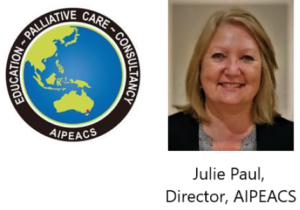
日本語訳監修: 木下佳代子 ジェックス参与
-
今月は、「国際看護師の日」を迎えました。 ご存知のように、国際看護師の日は、看護の先駆者であるフローレンス・ナイチンゲールの生誕記念日でもある5月12日に世界中で祝われています。 今年のテーマは、「看護師。 “A Voice to Lead – Invest in Nurses and respect rights to secure global health”(看護の声を届けよう-世界の健康を守るために、看護師への投資と権利の尊重を)でした。このテーマは、「現在そして将来の個人とコミュニティのニーズを満たす、弾力性のある質の高い保健システムを構築するために、看護に投資し、看護師の権利を尊重する」必要性に焦点を当てています。https://2022.icnvoicetolead.com/。

-
看護師としての活動、特にCOVID-19の大流行を経験した過去数年間の素晴らしい貢献に感謝します。どうもありがとうございました。
今月は、「日本における過去、現在、未来の終末期医療の意志決定」と題したユーチューブのプレゼンテーションについてお話したいと思います。宮下 毅教授(LLM文教大学、東京都) https://www.youtube.com/watch?v=4qh5KnOvWXw
本発表では、2018年に改訂された「終末期医療の意志決定手順は、積極的安楽死、消極的安楽死、医師幇助自殺について日本の視点から概観している。 発表者は、日本における終末期医療の課題は「Urgent Issue=喫緊の課題」であると主張する。 特に、「どこで死を迎えたいか」という質問に対して、「どこで死ねるか」という現実はどうなのか。 このデータでは、54.6%が自宅で死にたいと考えているのに対し、現実には12.7%の人が自宅で死んでいます。 この質問が日本において何時、誰にされたかが明らかではありません。しかし、重要なメッセージは、望まれる死亡場所と現実について考えることであり、そして、私たちの実践の中でこれに対して何が出来るかを考えることです。この統計は、YouTubeで発表された2019年以降、改善されていると思いますか?
昨年、私は日本語に翻訳された資料を2つご紹介しました。見ていない人のためにもう一度紹介します。
-
1. ヨーロッパ緩和ケア協会(European Association of Palliative Care)のサイト
-
ページの一番下、右側にgoogle翻訳があります。 これを使えば、すべての記事は日本語に翻訳されます。
-
このリンクをクリックすると、ページの上部に日本語に翻訳されたものにチェックが入ります。 ”show original “をクリックすると、
-
英語に戻ります。https://eapcnet.wordpress.com/category/advance-care-planning/page/4/
-
2. 日本緩和医療学会が発行するPalliative Care Research
このサイトには、640以上の登録論文を日本語で自由に閲覧することができます。
-
https://www.jstage.jst.go.jp/browse/jspm/_pubinfo/-char/en
もし、追加情報が必要な分野があれば、julie@palliativeeducation.com にリクエストしてください(英語または日本語)。必ず返答します。 緩和ケアに関するあなたの考えや経験を共有することで、私たちはお互いから学び続けることができるので、あなたの状況を私に知らせることを忘れないでください。
パンデミック中、どうかご無事でお過ごしください。 来月のキャッチアップを楽しみにしています。
お元気で ジュリー
[事務局より]
ジュリーさんは、皆様からの感想、質問などをお待ちしています。
-
Disclaimer: May 2022 免責条項:
Australian International Palliative Education and Consultancy Services (AIPEACS) は、Julie’s Corner シリーズ内の内容につき正確な情報の提供に細心の注意を注いでいますが、特にある事柄についての専門的意見を提供するものではありません。このシリーズに含まれる情報は、独立した専門家の見解に取って代るものではありません。また、医療上の助言として利用したり、何らかの疾患の治療、手当、又は、予防のために使用されるものではありません。
AIPEACSは、このシリーズにより提供される情報の利用、依存によるいかなる法的責任、怪我、紛失、損害については、責任は負いません 。
Australian International Palliative Education and Consultancy Services Pty. Ltd -
Julie’s Update: May 2022 (原文)
-
This month we celebrated International Nurses Day. As we know International Nurses Day was celebrated around the world on the 12 May which was also the anniversary of the birth of nursing pioneer Florence Nightingale. The theme for this year was “Nurses: A Voice to Lead – Invest in nursing and respect rights to secure global health”. This theme focused on the need to “invest in nursing and respect the rights of nurses in order to build resilient, high quality health systems to meet the needs of individuals and communities now and into the future.” https://2022.icnvoicetolead.com/

-
Thank you for everything that you do as a nurse and especially for your incredible contribution over the last few years, as we experienced the COVID-19 pandemic. どもありがとうございました
This month I would like to discuss a presentation on You Tube titled, “End of Life Care Decision Making in Japan: Past, Present and Future Perspectives, 2019 presented by Takeshi Miyashita, LLM Bunkyo University, Tokyo Japan.
-
https://www.youtube.com/watch?v=4qh5KnOvWXw
The presentation provides an overview of the revised 2018 Decision Making Procedures in End of Life Care, Active Euthanasia, Passive Euthanasia and Physician assisted suicide from a Japanese perspective. The presenter asserts that challenges for end of life care in Japan is an “Urgent Issue”. In particular, when referring to a question, where people would like to die compared to the reality of where it occurs? In the data presented 54.6% preferred to die in their own home versus the reality of 12.7% of people being able to achieve this. It is not clear when this question was asked and of who in Japan, however, the important message is to think about the difference between preference and reality for place of death, and what we can do to influence this within our practice. I wonder do you think this statistic would have improved since 2019 when the presentation was published on YouTube?
-
-
Last year I provided 2 resources that were translated into Japanese. I am providing them again in case you missed them:
- 1. European Association of Palliative Care – on the site there is a google translator at the bottom of the page on the right hand side. This will enable you to have all of the articles translated in Japanese. If you click on this link you will see at the top of the page I have ticked the Japanese translated version for you. If you click on “show original” it will go back to English.
- https://eapcnet.wordpress.com/category/advance-care-planning/page/4/
- 2. Palliative Care Research published by the Japanese Society for Palliative Medicine is a free access to over 640 registered articles in
- Japanese.
- https://www.jstage.jst.go.jp/browse/jspm/_pubinfo/-char/en
If you have any particular areas you would like additional information on, please forward your request (either in English or Japanese) to julie@palliativeeducation.com and we will ensure this is discussed. Don’t forget to let me know how you are going, as we enjoy sharing your thoughts and experiences in palliative care, so we can continue to learn from each other.
Please stay safe during the pandemic.
-
I am looking forward to our next month’s catch up.
-
Take care Julie
-
